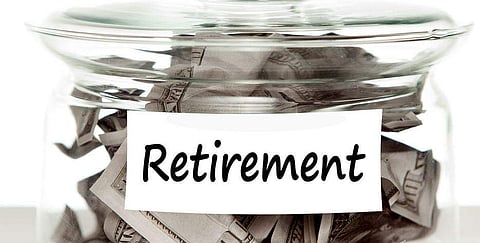

How does a salaried class person plan his/her retirement? What would be the source of income for the next 20 years of life after retirement? Those from the personal finance sector say that a lack of retirement plan often makes people depend financially on their children.
Take the case of Mohammad Noor, who worked for 28 years as a driver with a construction company in the UAE. At the time of retirement in 2012, his savings were in the form of fixed deposits. Six years later and now in his old age, Noor had to find work as a sherbet maker at Navrang Cool Drinks at MJ Market. "I had to take a loan for my daughter's treatment, kept the fixed deposits as surety but defaulted on loan repayment," said Noor who says he has lost hope of ever recovering his fixed deposit.
The Reserve Bank of India's 2017 household finance committee report found that Indian households tend to borrow later in life and are more likely to carry debts into their retirement age. This, according to the report, is a risk as there will be no income after retirement.
"Noor, should have taken a health insurance that covers his family and a critical health insurance for himself that would have provided at least a Rs 25 lakh cover irrespective of the type of illness, even if it is for cancer treatment. This would have helped him not touch his fixed deposits. Even if a retired person does not earn, the insurance will take care of medical risks," said Vipul Shah, chief executive officer of Lakshya Financial Planner. "In India, people expect their children to look after them or presume that their EPF corpus will suffice for their retirement expenses. But if you calculate the approximate money needed to lead a stress-free retired life, you will realise why planning for your retirement is as important as planning for your other life goals," he added.
But how many actually plan for their retirement? Not many, according to the RBI, as non-financial assets account for 95 per cent of an Indian household's balance-sheet. Financial assets (such as deposits and savings accounts, publicly traded shares, mutual funds, life insurance and retirement account) for just 5 per cent.
The situation is expected to get worse in the coming decades as the elderly population is expected to grow by 75 per cent. The RBI found that only a small fraction of people have any savings in the form of private pension plans or has not actively taken steps to ensure adequate financial coverage during retirement. "When combined with the low penetration of insurance, households appear particularly vulnerable to adverse shocks later in life," says the RBI report.
Only some people have savings: RBI
The RBI found that only a small fraction of people have any savings in the form of private pension plans or has actively taken steps to ensure adequate financial coverage during retirement
Infographics
Useful Tips
To ensure comfortable life after retirement, purchase a term insurance approximately 15 times your yearly salary without any riders. (If your yearly income is Rs 12 lakh, the insurance cover should be for Rs 1.80 crore)
Buy a Family Floater Health Insurance of Rs 5 lakh and purchase an additional super top-up policy of Rs 20 lakh. A super top-up policy works like this: Assume a family member is hospitalised and the claim amount is Rs 7 lakh, of which Rs 5 lakh will be reimbursed from Family Floater Health Insurance and Rs 2 lakh from the super top-up policy. Super Top-Up policies are affordable and do not pinch your pocket.
Buy a critical illness cover for at least Rs 25 lakh and make sure it does not have survival clause. Survival clause means a person, after being diagnosed with a critical illness as specified in an insurance policy, should live for another 30 days (number of days differs from policy to policy).If the insured person does not live for 30 days, the company is not liable to pay the claim of critical illness. When you are young, premiums are relatively low and nowadays certain insurance companies provide a discount if the premium is paid for 2 or more years.One should insure adequately.
Invest your money according to your risk appetite and asset allocation. Fixed deposit returns are around 6.5 pc which does not beat inflation and you have to pay tax for interest earned on FDs. Diversify your portfolio into various asset classes like FD, mutual funds, real estate and gold.
Create an emergency fund around 6 to 9 times your monthly expenses. It could be invested in fixed deposit or liquid mutual funds or savings bank account. This is to ensure that in case of job loss or loss in business you can continue your EMI and meet household expenses for 6 to 9 months till you find another source of income.
